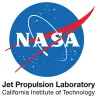Take a look inside 6 images
Jet Propulsion Laboratory
Pros: A bunch of authentic and accurate lessons capitalize on students' curiosity about space.
Cons: Teachers will need to dig to find the highest-quality resources. Projects are primarily text and image, so students could need a lot of assistance.
Bottom Line: These hands-on lessons approximate the work of NASA scientists, engineers, and astronauts and make use of actual NASA satellite data.
Math and science teachers of all levels can use the Jet Propulsion Laboratory site to find real-world ways to apply content. These lessons are best used when woven into an existing curriculum, though. Teachers might use images, video clips, or data as driving phenomena to start a lesson or a unit. For example, physics teachers might start by playing the simulation from "Lets Go to Mars! Calculating Launch Windows." They could challenge kids to find the most efficient launch opportunity for a spacecraft headed to Mars. This puzzle gives a reason for students to learn Kepler's second law and provides meaning to physics concepts. Since the activities themselves could be challenging for students to follow on their own, it'd be best if teachers reviewed the materials and then reworked and adapted them for in-class or remote -- and teacher-guided -- instruction.
Most tools are easy to open or download. There are some interactives linked to the Jet Propulsion Laboratory that require students to download a separate app called NASA's Eyes. A few activities require Flash Player.
Jet Propulsion Laboratory (JPL) is a national research facility that carries out robotic space and Earth science missions. The education section of the site features free lessons for teachers to use with their classes alongside projects for students to try from home. The broader JPL site also has articles, data, imagery, and video about JPL and NASA experiments, missions, and projects. The math and science tasks match with students ranging from kindergarten to 12th grade. For instance, kids can use geometric tangrams to design rocket ships or do an experiment to see if melting land ice or sea ice contributes to global sea level rise. Additionally, there are fun, more crafty activities like making a paper Mars rover or baking sunspot cookies.
Teachers can also use the site to find out about events and contests as well as news on NASA and JPL missions, discoveries, and more.
Jet Propulsion Laboratory (JPL) lessons allow students to engage in NGSS Science and Engineering Practices by analyzing real NASA data. In one lesson, students track water mass changes using heat map data from NASA's GRACE satellites. Then the lesson integrates math and science skills, asking students to estimate, create a line graph, assess trends, and discuss implications. What's great about this is how it combines real data analysis with authentic tasks that get students using data and then drawing conclusions from that data.
Some activities, like baking sunspot cookies, focus more on fun than on learning. However, even within some of these less academic tasks, it's clear that JPL has worked to balance engaging students and creating deep learning. For example, the JPL version of the classic "Make a Volcano" with baking soda is heavier on science than similar tasks on sites like Weather Wiz Kids. JPL has students graph how lava flows each time and then use play dough to build layers over time with multiple eruptions. It's in these tasks -- that take the inherent engagement of creation and fuse it with manipulation and use of real data -- that JPL shines.
The content can be uneven, but overall it's strong and has a great basis of data that'll absorb students and help them see how science and math are instrumental to space exploration. The big downfall with the JPL site is that teachers will need to do some digging to find the standout resources, since the quality isn't consistent. They'll also need to work to adapt the activities for classroom use, since they're structured as menu-driven articles with images and videos embedded. This format won't work great for all students, and would benefit from teacher-guided adaptation and instruction.













